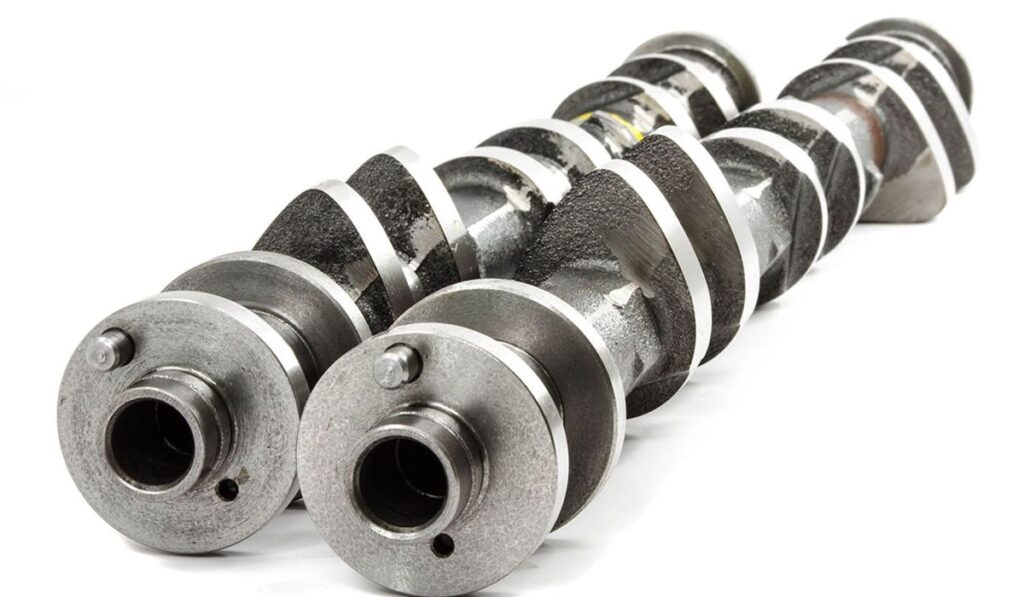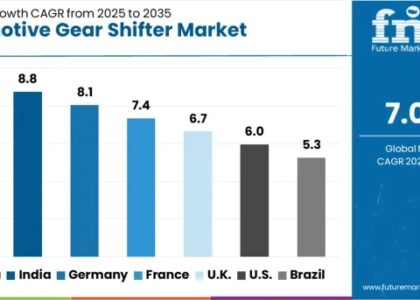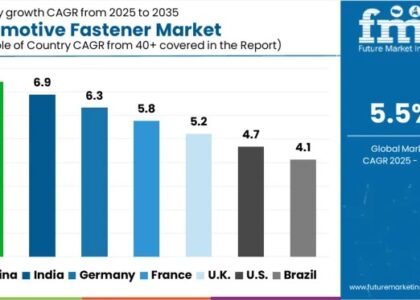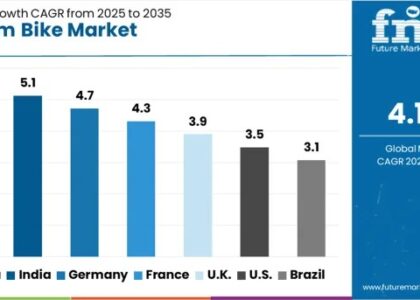
The automotive camshaft market is expected to grow at a CAGR of 3.7% during the assessment period. In 2024, the market is estimated to produce a revenue of US$ 10,662.70 million. By the end of 2034, the market is expected to be worth US$ 11,056.49 million.
The Automotive Camshaft Market involves the production, distribution, and integration of camshaft components into internal combustion engines used in vehicles. Camshafts play a critical role in controlling the opening and closing of intake and exhaust valves in an engine, regulating the flow of air and fuel and enabling the combustion process. Here’s an overview of the Automotive Camshaft Market:
Market Overview:
Scope: The market includes the manufacturing and supply of camshafts for various types of vehicles, including passenger cars, commercial vehicles, motorcycles, and racing vehicles.
Key Players: Major participants in the market include automotive OEMs, camshaft manufacturers, engine component suppliers, and aftermarket suppliers offering performance camshafts and replacement parts.
Market Dynamics: Factors driving the market include the demand for fuel-efficient and high-performance engines, advancements in engine technology, regulatory requirements for emissions reduction and fuel efficiency, and growth in the automotive aftermarket segment.
Request a Sample of this Report:
https://www.futuremarketinsights.com/reports/sample/rep-gb-1213
Key Features and Benefits:
Optimized Valve Timing: Camshafts control the timing and duration of valve opening and closing events, optimizing engine performance, power output, and fuel efficiency across different operating conditions.
Enhanced Engine Efficiency: Efficient camshaft designs improve air intake and exhaust flow, combustion chamber filling, and scavenging efficiency, enhancing engine efficiency and reducing emissions.
Increased Power and Torque: Performance camshafts with aggressive lift and duration profiles can increase engine power and torque output, providing improved acceleration, towing capability, and overall vehicle performance.
Improved Engine Response: Camshaft designs optimized for low-end torque or high-RPM power delivery can enhance engine response, throttle sensitivity, and drivability, providing a more engaging driving experience.
Reduced Emissions: Camshaft profiles tailored for optimal combustion efficiency and emissions control help reduce harmful emissions such as nitrogen oxides (NOx), hydrocarbons (HC), and particulate matter (PM), supporting environmental regulations and emission standards compliance.
Enhanced Durability: High-quality camshaft materials and manufacturing processes ensure durability, wear resistance, and long-term reliability under high-stress operating conditions, minimizing maintenance requirements and downtime for engine repairs.
Compatibility with Engine Components: Camshaft designs are engineered to work seamlessly with other engine components such as cylinder heads, valves, lifters, and valve springs, ensuring compatibility, reliability, and optimal performance in the engine assembly.
Market Trends:
Advanced Materials and Manufacturing: The adoption of advanced materials such as chilled cast iron, billet steel, and alloy steels, along with advanced manufacturing techniques such as CNC machining and precision grinding, improves camshaft performance, durability, and reliability.
Performance and Racing Applications: The demand for high-performance camshafts in racing and performance applications drives innovation in camshaft design, materials, and profiles to maximize engine power, torque, and RPM capabilities while maintaining reliability and durability.
Variable Valve Timing (VVT) Technology: The integration of VVT systems into camshaft designs enables dynamic control of valve timing and lift, improving engine efficiency, power delivery, and emissions performance in mainstream passenger vehicles and high-performance engines.
Aftermarket Performance Upgrades: The aftermarket segment offers performance camshafts and camshaft upgrade kits for enthusiasts seeking to enhance engine performance, sound, and responsiveness, driving demand for aftermarket camshaft solutions and engine tuning services.
Electrification and Hybridization: The shift towards electrification and hybrid powertrains in vehicles influences camshaft design and integration with hybrid engine architectures, including hybrid camshaft profiles optimized for hybrid power delivery and energy regeneration.
Engine Downsizing and Turbocharging: Engine downsizing and turbocharging trends influence camshaft design requirements for smaller displacement engines with turbocharged induction systems, requiring camshaft profiles optimized for turbocharger response, low-end torque, and high-RPM performance.
Emissions Control and Compliance: Regulatory requirements for emissions reduction and fuel efficiency drive innovation in camshaft design and engine technology to optimize combustion efficiency, minimize emissions, and meet stringent emissions standards in various markets worldwide.
Direct Purchase of this Report:
https://www.futuremarketinsights.com/checkout/1213
Challenges:
Complexity of Engine Integration: Camshaft design and integration require consideration of engine architecture, cylinder head design, valve train geometry, and other factors, posing challenges for optimizing camshaft performance, compatibility, and reliability within the engine assembly.
Balancing Performance and Emissions: Meeting performance targets while complying with emissions regulations requires balancing camshaft profiles, valve timing, and lift characteristics to optimize engine efficiency, power output, and emissions performance without sacrificing drivability or reliability.
Cost Constraints: Cost considerations, pricing pressures, and competitive market dynamics may limit investments in advanced camshaft materials, manufacturing processes, and design optimization, affecting product quality, performance, and innovation.
Supply Chain Disruptions: Supply chain disruptions, material shortages, and production delays in the automotive industry impact camshaft manufacturing and availability, leading to production bottlenecks, lead time extensions, and inventory management challenges for OEMs and suppliers.
Compatibility with Engine Management Systems: Camshaft designs must be compatible with engine management systems, fuel injection systems, and emissions control systems, requiring coordination and calibration to ensure optimal engine performance, drivability, and emissions compliance.
Heat and Wear Resistance: Camshaft materials and surface treatments must withstand high temperatures, wear, and frictional forces in the engine, requiring advanced metallurgy, heat treatment, and surface coatings to enhance durability, longevity, and wear resistance.
Technological Obsolescence: Rapid advancements in engine technology, electrification, and alternative powertrains may render conventional camshaft designs obsolete, requiring continuous innovation, adaptation, and research in camshaft engineering and development.
About Future Market Insights (FMI)
Future Market Insights, Inc. (ESOMAR certified, recipient of the Stevie Award, and a member of the Greater New York Chamber of Commerce) offers profound insights into the driving factors that are boosting demand in the market. FMI stands as the leading global provider of market intelligence, advisory services, consulting, and events for the Packaging, Food and Beverage, Consumer, Technology, Healthcare, Industrial, and Chemicals markets. With a vast team of over 5000 analysts worldwide, FMI provides global, regional, and local expertise on diverse domains and industry trends across more than 110 countries.
Contact Us:
Future Market Insights Inc.
Christiana Corporate, 200 Continental Drive,
Suite 401, Newark, Delaware – 19713, USA
T: +1-845-579-5705
For Sales Enquiries: sales@futuremarketinsights.com
Website: https://www.futuremarketinsights.com
LinkedIn| Twitter| Blogs | YouTube





